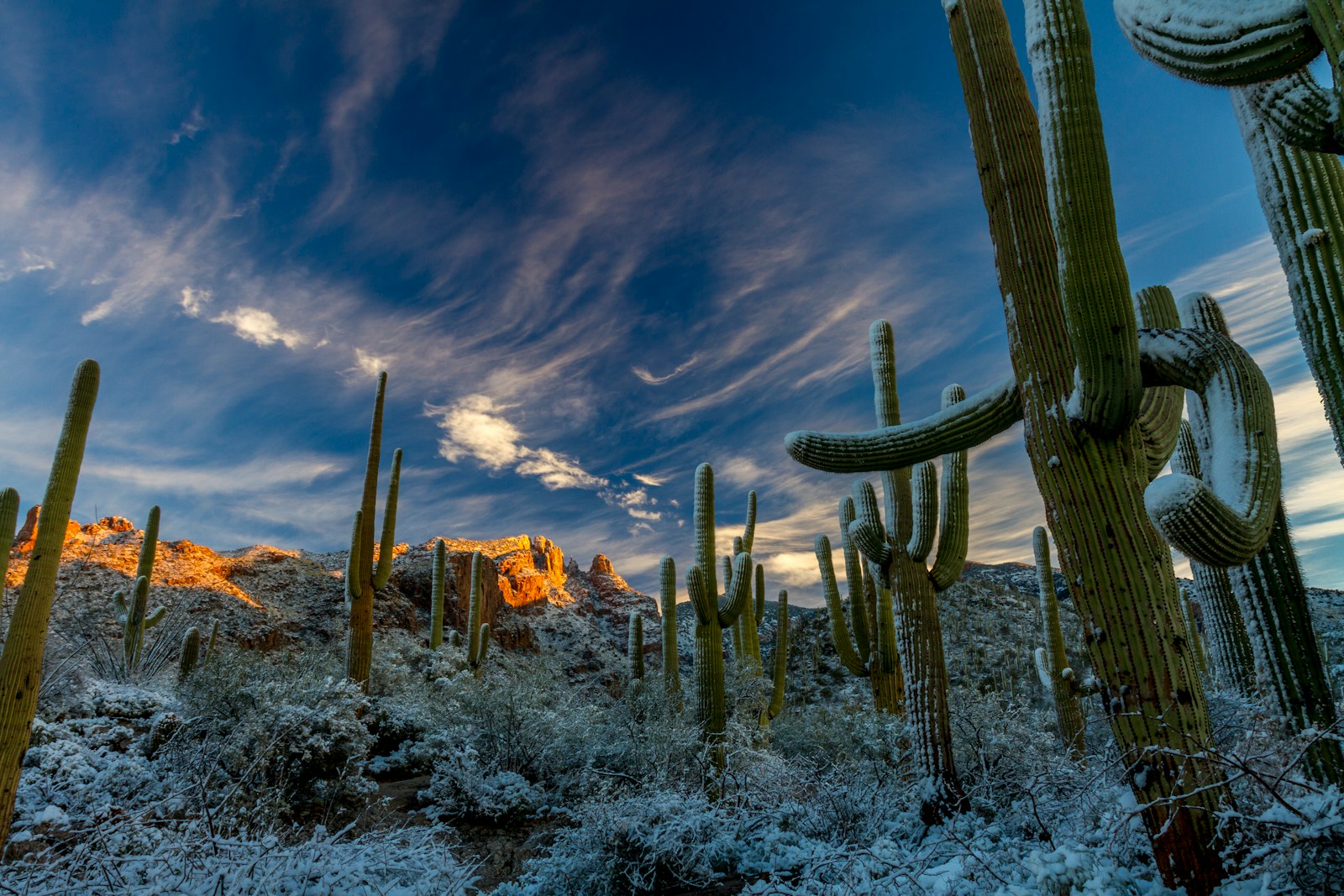Table of Contents
ToggleIntroduction: Understanding the Landscape of Climate Change Denial
Climate change denial represents a significant impediment to addressing one of the most pressing challenges facing humanity. It is characterized by the rejection of the overwhelming scientific consensus that the Earth’s climate is warming at an unprecedented rate and that human activities, primarily the burning of fossil fuels, are the primary driver of this warming. While the term “denial” is often used, it is important to distinguish it from legitimate scientific skepticism and contrarianism. Scientific skepticism involves questioning claims and seeking further evidence, a cornerstone of the scientific method. In contrast, climate change denial typically involves rejecting well-established scientific findings based on ideology, vested interests, or misinformation. The spectrum of denial is broad, ranging from the outright rejection of the science to acknowledging the reality of climate change but denying its severity or opposing the feasibility and necessity of implementing solutions. One definition of “climate denial” emphasizes the rejection of the accepted science that greenhouse gas emissions must be stopped as soon as possible due to the present and worsening threat of human-caused climate change. Furthermore, it is important to note the distinction between misinformation, which is erroneous information disseminated without the intent to mislead, and disinformation, which includes fake news and conspiracy theories spread with malicious intent. Given the difficulty in definitively proving intent, the broader term “misinformation” often serves as a useful umbrella term when discussing the spread of inaccurate information about climate change.
The significance of climate change denial cannot be overstated. It actively undermines public understanding of climate science, creating confusion and hindering the acceptance of well-established findings. This, in turn, directly impedes support for crucial climate mitigation policies and actions at individual, societal, and governmental levels. As one source notes, climate change denialism is a very real and common position that threatens to destabilize and undo the work of governments, businesses, and everyday people to combat global warming. Misinformation surrounding climate change is known to undermine actions and erode public support for efforts to combat it. Consequently, climate change denial poses a significant barrier to the widespread and coordinated efforts required to effectively address the climate crisis.
This review aims to provide a comprehensive analysis of climate change denial by focusing on the prevalent myths and misconceptions that underpin it. It will offer examples of how these myths are employed in public discourse, identify key individuals and organizations that play a role in promoting climate denial, examine the crucial role of misinformation in perpetuating denialist beliefs, and briefly discuss established strategies for effectively counteracting climate denial.
The Spectrum of Climate Change Denial: From Science Rejection to Solution Obstruction
Climate change denial is not a monolithic entity but rather exists along a spectrum, encompassing various forms of rejecting or downplaying the scientific consensus and the urgency of action. Understanding these different forms is crucial for developing targeted strategies to address them.
Literal denial constitutes the most fundamental form, involving the outright rejection of the scientific evidence that global warming is happening. Individuals or groups espousing literal denial often argue that there is no significant increase in global temperatures or that the data supporting warming trends is unreliable or even fabricated. While the overwhelming scientific evidence makes this position increasingly untenable, it still persists and often serves as the foundation for more nuanced forms of denial.
Interpretive denial acknowledges that the climate is changing but rejects the scientific consensus regarding its primary cause and severity. Those engaging in interpretive denial may concede that temperatures are rising but attribute these changes solely to natural cycles, such as variations in solar activity or long-term geological processes. They often downplay the significant role of human activities, particularly the emission of greenhouse gases from burning fossil fuels, and may also minimize the potential for severe and widespread negative impacts associated with climate change.
Implicatory denial represents a more subtle but equally consequential form of denial. Individuals exhibiting implicatory denial may accept that climate change is happening and is human-caused but deny the psychological, social, and political implications that logically follow from this understanding. This can manifest as a resistance to the significant societal changes or policy interventions deemed necessary to mitigate climate change. People may acknowledge the problem intellectually but resist changes in their lifestyle, economic practices, or the broader governance structures required to address the crisis effectively. As noted, denial can serve as a coping mechanism against a phenomenon that necessitates widespread action and change.
Finally, solution denial focuses on arguing against the feasibility or effectiveness of proposed climate solutions. This form of denial often involves spreading misinformation about renewable energy technologies, such as their reliability or cost-effectiveness, or promoting false or inadequate solutions that allow for the continued reliance on fossil fuels. As the scientific consensus on climate change has become increasingly robust and difficult to dispute directly, denial efforts have progressively shifted towards undermining support for viable solutions, thereby delaying or preventing their implementation.
Common Myths and Misconceptions about Climate Change: Debunking the Denialist Playbook
Climate change denial often relies on the propagation of various myths and misconceptions that aim to undermine public confidence in climate science. Debunking these myths with accurate scientific information is a crucial step in countering denial.
Myth 1: “Climate has changed naturally before, so the current warming is just a natural cycle.”
This argument attempts to normalize the current rapid warming trend by pointing to past instances of climate change throughout Earth’s history. However, while it is true that the Earth’s climate has fluctuated naturally over long periods, the overwhelming scientific evidence indicates that the current rate of warming is unprecedented in recent millennia. This accelerated change directly correlates with the dramatic increase in human-caused greenhouse gas emissions, particularly since the Industrial Revolution. The accelerated nature of the change observed in the last two centuries cannot be attributed to purely natural causes alone. Indeed, historical increases in atmospheric CO2 levels, even from natural sources, have led to significant environmental disruptions, including mass extinction events, serving as a warning about the potential consequences of today’s rapid increase.
Myth 2: “The sun is the main cause of climate change.”
This myth attempts to deflect responsibility for climate change away from human activities by attributing it to natural variations in solar activity. However, scientific data collected over several decades demonstrates that solar activity has not shown a significant increasing trend that would explain the current rapid warming. In fact, some data even suggests a slight cooling trend in solar output during the same period that global temperatures have continued to rise. The scientific consensus firmly points to human activities, primarily the burning of fossil fuels, as the dominant forcing factor driving the current global warming trend.
Myth 3: “There is no scientific consensus on climate change.”
This claim is a cornerstone of climate denial, aiming to sow doubt in the public’s mind about the validity of climate science. However, numerous studies have consistently shown an overwhelming consensus among climate scientists, with agreement rates ranging from 97% to 99%, that the Earth is warming and that human activities are the primary cause. This consensus is further supported by the statements and findings of major scientific organizations worldwide, such as the Intergovernmental Panel on Climate Change (IPCC). The notion of a significant disagreement within the scientific community is a tactic frequently employed by climate deniers to create the false impression of an ongoing debate and thereby delay action.
Myth 4: “Climate models are unreliable and cannot accurately predict the future.”
Climate models are sophisticated computer simulations that use our understanding of the Earth’s climate system to project future climate scenarios. While it is true that these models have uncertainties, they have also demonstrated a significant ability to accurately reproduce past warming trends and have even correctly predicted average surface temperatures decades in advance. These models are constantly being refined and improved as our understanding of the climate system grows. Attacking the reliability of climate models is a common tactic used by deniers to dismiss projections of future climate change impacts and downplay the urgency of reducing greenhouse gas emissions.
Myth 5: “It’s still cold, so how is global warming real?”
This argument highlights a fundamental misunderstanding of the difference between weather and climate. Weather refers to the short-term atmospheric conditions in a specific location, while climate describes the long-term patterns and trends in weather over extended periods and larger regions. A local cold spell or a snowy winter does not negate the long-term global trend of rising average temperatures. In fact, climate change can even lead to more extreme weather events, including unusual cold snaps in some regions due to disruptions in atmospheric circulation patterns. The attempt to disprove global warming with an isolated instance of cold weather, as exemplified by Senator James Inhofe’s snowball incident, demonstrates this flawed logic.
Myth 6: “CO2 is good for plants, so increasing CO2 levels are beneficial.”
While carbon dioxide is indeed essential for plant photosynthesis, the rapid increase in atmospheric CO2 concentrations due to human activities is having overwhelmingly negative consequences for the Earth’s climate system. These negative impacts, such as rising global temperatures, ocean acidification, more frequent and intense extreme weather events, and disruptions to ecosystems, far outweigh any potential short-term benefits to plant growth. This argument often oversimplifies the complex interactions within the environment and ignores the detrimental effects of climate change on other crucial factors for plant health, such as water availability and stable temperature ranges.
Table 1: Common Climate Change Denial Myths and Their Scientific Rebuttals
| Common Myth | Scientific Rebuttal |
| Climate has changed naturally before, so the current warming is just a natural cycle. | Current warming rate is unprecedented and correlates with human emissions. Past CO2 increases led to disruptions. |
| The sun is the main cause of climate change. | Solar activity has not increased; it shows a slight cooling trend while global temperatures rise. Human activity is the dominant forcing factor. |
| There is no scientific consensus on climate change. | Overwhelming consensus (97-99%) among climate scientists that warming is happening and human-caused. Major scientific organizations agree. |
| Climate models are unreliable and cannot accurately predict the future. | Models have accurately predicted past warming and are constantly refined. They provide valuable projections of future scenarios. |
| It’s still cold, so how is global warming real? | Weather (short-term) differs from climate (long-term trends). Local cold spells do not disprove global warming. Climate change can even cause extreme weather, including cold snaps. |
| CO2 is good for plants, so increasing CO2 levels are beneficial. | Negative climate impacts (rising temperatures, ocean acidification, extreme weather) outweigh any benefits to plant growth. Oversimplifies complex environmental interactions. |
Examples of Climate Denial in Action: From Political Stunts to Organized Campaigns
Climate change denial manifests in various forms, from individual expressions of skepticism to well-funded and organized campaigns aimed at misleading the public and hindering climate action.
Political stunts sometimes serve as highly visible examples of climate denial. The “Snowball in the Senate” incident in 2015, orchestrated by then-Senator James Inhofe, provides a stark illustration. Inhofe brought a snowball onto the Senate floor during a speech, using it as supposed evidence that global warming was a hoax due to the cold weather in Washington D.C. at the time. This act, while scientifically flawed as it confused weather with climate, garnered significant media attention and reinforced denialist viewpoints among certain segments of the population. Inhofe, who authored a book calling climate change “the greatest hoax ever perpetrated on the American people,” was a long-standing and vocal denier who used his political platform to spread skepticism about climate science.
Media appearances and statements by known deniers also play a significant role in shaping public perception. Bjorn Lomborg, for example, has consistently promoted climate change skepticism and downplayed the risks associated with it in various media outlets. His articles often misrepresent scientific data and rely on flawed analysis to argue against the urgency and effectiveness of climate policies. Individuals with a public platform, even when their views lack robust scientific backing, can significantly influence public opinion on climate change.
Organized campaigns funded by denialist organizations represent a more systemic form of climate denial. The Heartland Institute, for instance, actively promotes climate denial through a variety of channels, including publications, events, and direct outreach to educators and school board members. They have distributed materials challenging the scientific consensus on climate change to teachers, aiming to inject doubt into educational settings. Similarly, organizations like the CO2 Coalition disseminate materials that downplay the negative impacts of carbon dioxide and even suggest it has beneficial effects. The energy industry itself has been implicated in funding educational programs that present a favorable view of fossil fuels while downplaying the climate crisis, a tactic referred to as “petro-pedagogy”. Examples include programs like Energy4me by the Society of Petroleum Engineers and Shell NXplorers. Even conservative media outlets like PragerU have had their climate denial videos approved for use in schools, further illustrating the organized effort to disseminate denialist narratives.
The online spread of misinformation and conspiracy theories has become a particularly potent tool for climate denial. Social media platforms provide fertile ground for the amplification of denialist narratives and attacks on climate scientists. Conspiracy theories, such as the “Climategate” scandal involving misrepresented emails from climate scientists, have been used to undermine public trust in climate science. Memes and other forms of visual content are also widely used to spread climate denial messages, often exploiting perceived hypocrisy or using humor to downplay the seriousness of the issue. The ability of misinformation to spread rapidly and widely online poses a significant challenge to public understanding of climate science.
Identifying Key Climate Change Deniers and Organizations: The Architects of Doubt
The landscape of climate change denial is populated by a network of prominent individuals and organizations that actively work to promote skepticism and undermine climate action.
Among the prominent individuals who have played a significant role in climate change denial is the late Senator James Inhofe. As discussed earlier, his political stunts and vocal pronouncements against climate science made him a leading figure in the denial movement. Another notable individual is Bjorn Lomborg, who, while sometimes acknowledging the reality of climate change, consistently downplays its severity and criticizes climate policies, often being described as a “lukewarmer”. Many other individuals associated with denialist think tanks, contrarian scientists who receive disproportionate media attention, and commentators in conservative media also contribute to the spread of climate denial.
Key organizations form the backbone of the organized climate change denial movement. The Heartland Institute is a particularly influential think tank that actively promotes climate denial through its publications, conferences, and outreach to policymakers and educators. The CO2 Coalition is another organization that focuses on disseminating information that downplays the risks of increased atmospheric carbon dioxide. Numerous other think tanks, often funded by the fossil fuel industry and conservative donors, also play a crucial role in producing and disseminating denialist narratives in the form of research reports, newsletters, and social media content. These organizations often form a well-coordinated network, strategically adapting their messaging to the prevailing political and social environment.
The motivations behind climate denial are multifaceted. Economic interests, particularly the desire to protect the highly profitable fossil fuel industry and related investments, are a primary driving force for many individuals and organizations involved in denial. Political ideology also plays a significant role, with climate change denial often aligning with conservative or libertarian viewpoints that oppose government regulation and environmental policies. Furthermore, psychological factors such as cognitive dissonance, motivated reasoning (the tendency to seek out and interpret information that confirms pre-existing beliefs), and the desire to maintain a particular worldview can contribute to an individual’s susceptibility to climate denial. The fear among some conservatives that climate change legislation represents a threat to their values and identity can also lead to the adoption of climate denialism.
Table 2: Key Climate Change Deniers and Organizations
| Name | Affiliation/Role | Examples of Denialist Activities | Primary Motivation |
|---|---|---|---|
| Senator James Inhofe (deceased) | Former US Senator | “Snowball in the Senate” stunt, author of “The Greatest Hoax,” consistently vocal against climate science. | Political Ideology |
| Bjorn Lomborg | Author, Academic (often described as “lukewarmer”) | Consistently downplays climate risks and criticizes climate policies in media appearances and publications. | Potentially a combination of factors, including ideological. |
| The Heartland Institute | Think Tank | Actively promotes climate denial through publications, conferences, and outreach to educators, distributing materials challenging climate science. | Economic Interests, Political Ideology |
| The CO2 Coalition | Advocacy Group | Distributes materials downplaying the negative impacts of carbon dioxide and suggesting its benefits. | Economic Interests, Political Ideology |
| Energy4me (Society of Petroleum Engineers) | Educational Program | Promotes a view of the oil and gas industry that downplays the climate crisis in educational materials. | Economic Interests |
| Shell NXplorers | Educational Program | Acknowledges climate change but lacks direct emphasis on the negative impacts of fossil fuels in its educational content. | Economic Interests |
| PragerU | Conservative Media Outlet | Produces and disseminates climate denial videos, some of which have been approved for use in schools. | Political Ideology |
The Role of Misinformation and Disinformation: Fueling the Denial Machine
Misinformation and disinformation serve as the lifeblood of climate change denial, actively working to undermine public understanding and acceptance of climate science.
The sources and channels through which climate misinformation spreads are diverse and often interconnected. The fossil fuel industry and its associated lobby groups have historically been significant sources of funding for organizations that produce and disseminate climate denial. Conservative media outlets and blogs frequently amplify denialist narratives, often giving voice to unscientific views. Social media platforms have become particularly effective channels for the rapid and widespread dissemination of climate misinformation, often bypassing traditional media gatekeepers. The use of “fake experts,” individuals presented as authorities on climate science despite lacking relevant credentials or expertise, is another common tactic employed to spread doubt.
Climate denial relies on a consistent set of tactics and techniques to distort scientific understanding and mislead the public. Cherry-picking data, selectively highlighting isolated facts or time periods that appear to contradict the overall warming trend while ignoring the vast body of evidence, is a common strategy. The use of logical fallacies, such as the false dichotomy or the appeal to ignorance, is also prevalent in denialist arguments. While often accusing climate advocates of fear-mongering, climate deniers themselves sometimes employ emotional appeals and spread alarmist rhetoric about the economic or social consequences of climate action. Conspiracy theories, such as the notion that climate change is a hoax perpetrated by scientists for personal gain or as part of a larger political agenda, are frequently used to attack the integrity of climate science and scientists. The creation of fake experts and the promotion of fringe scientific viewpoints that contradict mainstream findings further contribute to the spread of misinformation. Finally, the misrepresentation of scientific findings and reports, often through selective quoting or taking information out of context, is a common tactic used to sow doubt and confusion.
The impact of climate misinformation is far-reaching and detrimental. It leads to reduced climate literacy among the public, hindering their understanding of the complexities and urgency of climate change. This misinformation also contributes to increased polarization and division on climate issues, making it more difficult to achieve consensus on necessary actions. Perhaps most concerning is the erosion of trust in science and scientists that results from the constant barrage of misinformation, making it harder for credible scientific voices to be heard. Ultimately, the spread of climate misinformation leads to delayed or weakened climate policy and action, exacerbating the risks and impacts of climate change. Research suggests a link between higher per capita CO2 emissions and lower acceptance of climate change, indicating the significant influence of misinformation on public attitudes.
Counteracting Climate Change Denial: Strategies for Truth and Engagement
Counteracting climate change denial requires a multifaceted approach that focuses on education, proactive debunking, and effective communication strategies.
Education plays a fundamental role in promoting climate literacy and equipping individuals with the knowledge and critical thinking skills necessary to discern accurate information from misinformation. Providing clear, accessible, and accurate information about climate science, its impacts, and the overwhelming scientific consensus is crucial. Directly addressing common myths and misconceptions with evidence-based rebuttals can help to correct false narratives. Enhancing teachers’ awareness of climate change denial arguments and strengthening their debunking skills is also essential, particularly given the organized efforts to introduce denialist materials into educational settings.
Inoculation and “prebunking” strategies represent proactive approaches to combating misinformation. These techniques involve exposing individuals to weakened forms of misinformation or explaining the common tactics used in denial before they encounter more persuasive or emotionally charged versions. By familiarizing people with these arguments and techniques, it is possible to build resistance and reduce the likelihood of them being influenced by misinformation in the future.
Debunking and fact-checking remain essential tools for addressing climate misinformation after it has been disseminated. Providing clear, concise, and evidence-based rebuttals to specific climate myths and highlighting credible sources of information can help to correct false narratives and reinforce scientific understanding. Organizations dedicated to fact-checking climate-related claims play a vital role in this effort.
Effective communication strategies are crucial for reaching diverse audiences and overcoming resistance to climate science. Using clear, simple, and accessible language, avoiding jargon where possible, can improve comprehension. Connecting with audiences on the basis of their values and identities, rather than simply presenting scientific data, can be more persuasive. Building trust through the use of credible messengers and focusing on solutions and positive framing, where appropriate, can also enhance engagement and promote acceptance of climate science and action. Culturally aligned messages delivered by trusted individuals are more likely to resonate and be successful in countering misinformation.
Conclusion: The Ongoing Battle Against Climate Denial
Climate change denial, in its various forms, remains a significant obstacle to effective climate action. It is characterized by the rejection of the well-established scientific consensus on anthropogenic global warming and often relies on the propagation of myths and misconceptions. These denialist narratives are spread through a variety of channels by a network of individuals and organizations, often motivated by economic or ideological interests. The role of misinformation and disinformation in fueling climate denial cannot be overstated, as it undermines public understanding, erodes trust in science, and delays necessary policy responses.
Addressing climate denial is of paramount importance for facilitating informed public discourse and decision-making, building support for effective climate policies and solutions, protecting the integrity of climate science, and ultimately enabling meaningful action to mitigate and adapt to the profound challenges posed by climate change.
Future efforts in this area should focus on further investigating the evolving tactics of climate denial to remain ahead of new strategies. Continued development and rigorous evaluation of counter-strategies, such as inoculation and targeted debunking, are essential. A deeper understanding of the psychological and sociological factors that contribute to an individual’s susceptibility to denial will also be crucial for tailoring effective communication and engagement strategies. Finally, strengthening climate education at all levels and enhancing public outreach efforts to promote climate literacy and critical thinking skills will build long-term resilience against misinformation and foster a greater societal commitment to addressing the climate crisis.






